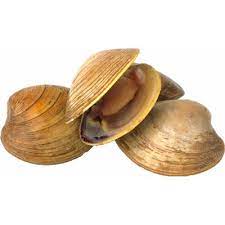The Cost of Clams
Clams are a type of shellfish, more precisely bivalve gastropods, invertebrates, with calcareous shells. Their content is edible and full of nutritional qualities. They can be easily found and cooked, being considered in many coastal areas the food of the poor.
Orpheus, who was also a healer, used clams to cure throat, brain, and stomach diseases. Both the Greeks and the Romans used shellfish in general, both as culinary delicacies and as medical treatments. Moreover, other uses have been attributed to shellfish. For example, being used by the indigenous peoples of North America as currency.
How Much Do Clams Cost?
The cost of fresh clams will be influenced by a few factors such as your geographical location, the type of clams, where you buy them from, the time of the year, and how many you are going to purchase. Taking into consideration all of these factors, you should be prepared to spend anywhere between $5 per pound of clams bought from a local fish market and $25 for a pound of clean clams ready to be cooked.
If you are going to a grocery store, most probably you will find farm-raised littleneck clams which are sold in a 50-count bag. Depending on the market conditions, you will have to pay anywhere between $15 and $18 for one of these bags. For example, at Wegmans, a 50-count bag of clams costs around $16.
Depending on the brand, for canned chopped clams you will have to pay anywhere between $3 and $5.5 for a 6.5-ounce can. For example, the popular brand Bumble Bee sells a can for around $3.
You might also like our articles on the cost of abalone, oysters, and mussels.
In the table below you will find the average costs per pound for different types of clams.
| Type of Clams | Average Price (per pound) | Description |
| Surf | $11 to $15 | A surf clam is used in a lot of culinary dishes, from chowder to the popular sushi. It has a sweet flavor and measures around 7 inches. |
| Steamer | $8 to $14 (15-20 clams per pound) | It has the best taste when steamed with white wine, butter, or garlic, as the name implies. It is also known as a piss clam or a soft shell. |
| Razor | $5 to $10 per pound raw or up to $18 to $21 per pound cleaned | Razor clams can only be harvested once per month during the full moon when the tide is in negative motion. |
| Manila | $7 to $14 (18-25 clams per pound) | Usually, you will find around 18 to 25 clams in a point of manila clams. They are usually used for steaming and will often be consumed in a salad or as an appetizer. |
| Hard Shell |
|
A hard shell is also known as a quahog, cherrystone, topneck, or littleneck. These clams are pretty great as appetizers or half shells and their size will usually be anywhere between one and four inches. |
| New Zealand Cockle | $8 to $13 (18-25 clams per pound) | The waters they are gotten from will usually make cockles, just like in the case of manila clams, of better quality. |
Types of clams
Shucked
The shucked clams are the people’s favorites because they have both parts removed and don’t require any work from you to get to the meat. These come in many forms such as canned, fresh, chopped, breaded, frozen, steaked, or stripped.
Half shell
As its name says, a half shell has its top shell removed and can be either fresh or frozen.
Shell stock
A shell stock clam will have both its shells intact and will not be processed in any way. These are sold either frozen or fresh. This type of clam is consumed steamed, raw, or just added to a recipe.
What are the additional costs?
If you purchase the clams from an online retailer and you have not met the seller’s minimum spending requirement, you may have to pay the shipping fees. Because they are so sensitive, clams require special ice packs to keep them cool during their transportation, and the majority of the online retailers will ship only overnight. So, be prepared to spend another $25 to $40 just for the shipping.
If you have to open a large number of clams for a meal it would be a good idea to purchase a clam shucking knife.
Important things to consider
 Clams can be found on the market in two forms: hard shell and soft shell. The soft-shell clams have a brittle and thin clam that cannot be closed completely, while the hard-shell clams can be found on the East Coast and come in three different sizes. Clams can be available all year round, depending on the geographical area.
Clams can be found on the market in two forms: hard shell and soft shell. The soft-shell clams have a brittle and thin clam that cannot be closed completely, while the hard-shell clams can be found on the East Coast and come in three different sizes. Clams can be available all year round, depending on the geographical area.
Before cooking, to make sure that the clams are fresh, check if they have a pleasant smell, and do not forget to wash them carefully. They can be eaten raw, baked, fried, or steamed in water or white wine until their shells open. Clams can be stored for up to 3 months by freezing them. To prepare them, they must be rinsed with salt water, placed in a container with their juice, and covered with salt water.
According to Seafood Health Facts, the smallest-sized clams are called littlenecks, followed by middle necks, top necks, cherrystones, and chowders, which are the largest. These sizes will vary from one region to another.
If you live close to the ocean, you can purchase fresh clams from your local seafood market. But if you live in a region far away from the ocean, you can buy clams online via reputable retailers, from a seafood specialty market, or from a local grocery store. Clams can be found at the seafood counter. For example, Whole Foods lets you order the clams, and seafood in general, three to four days in advance.
It is recommended to get informed about where the clams are coming from and if these are safe from consumption before purchasing them online or directly from the store.
Clams have a lot of benefits for your health. They are high in niacin, selenium, magnesium, iron, protein, and low in fat. They have a higher protein intake than lean beef, with 100 g of clams providing more than half of the daily recommended protein dose for an adult, unlike beef which provides only 28%. Moreover, only 6 grams of clams provide 100% of the recommended daily dose of vitamin B12.


Leave a Reply
Want to join the discussion?Feel free to contribute!